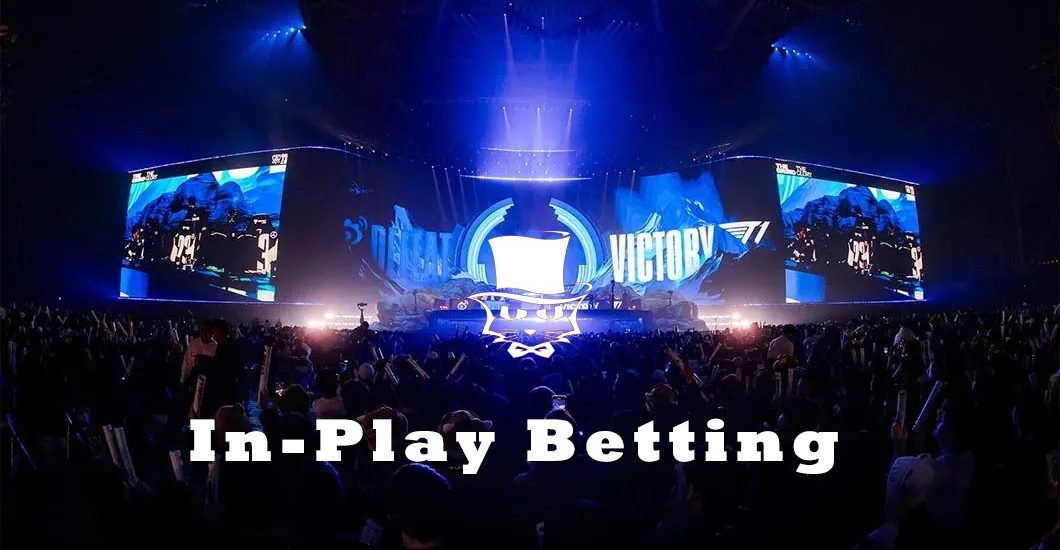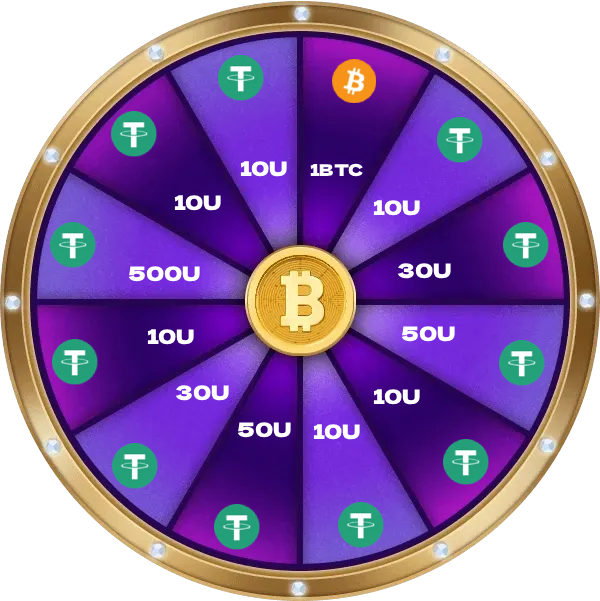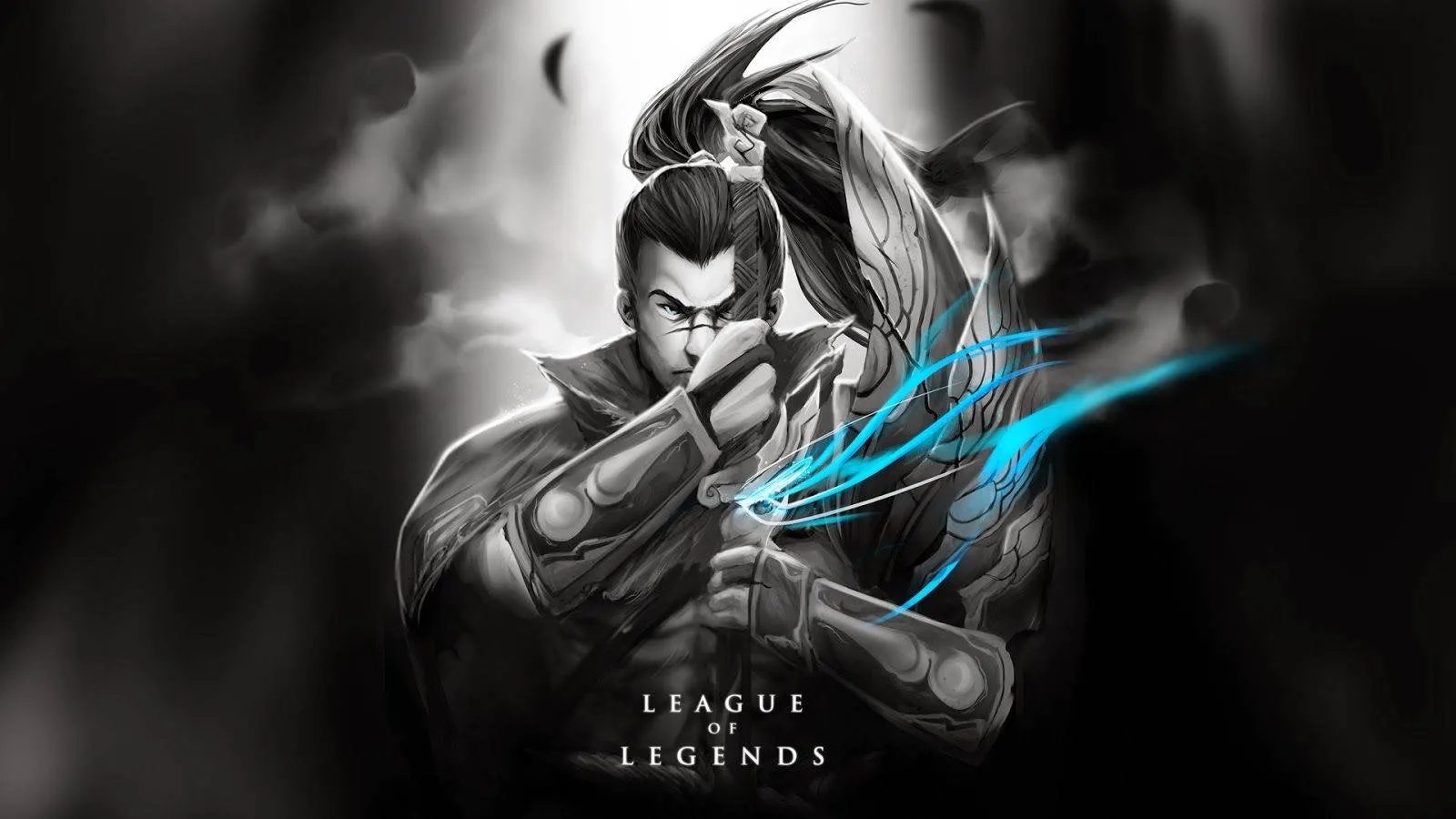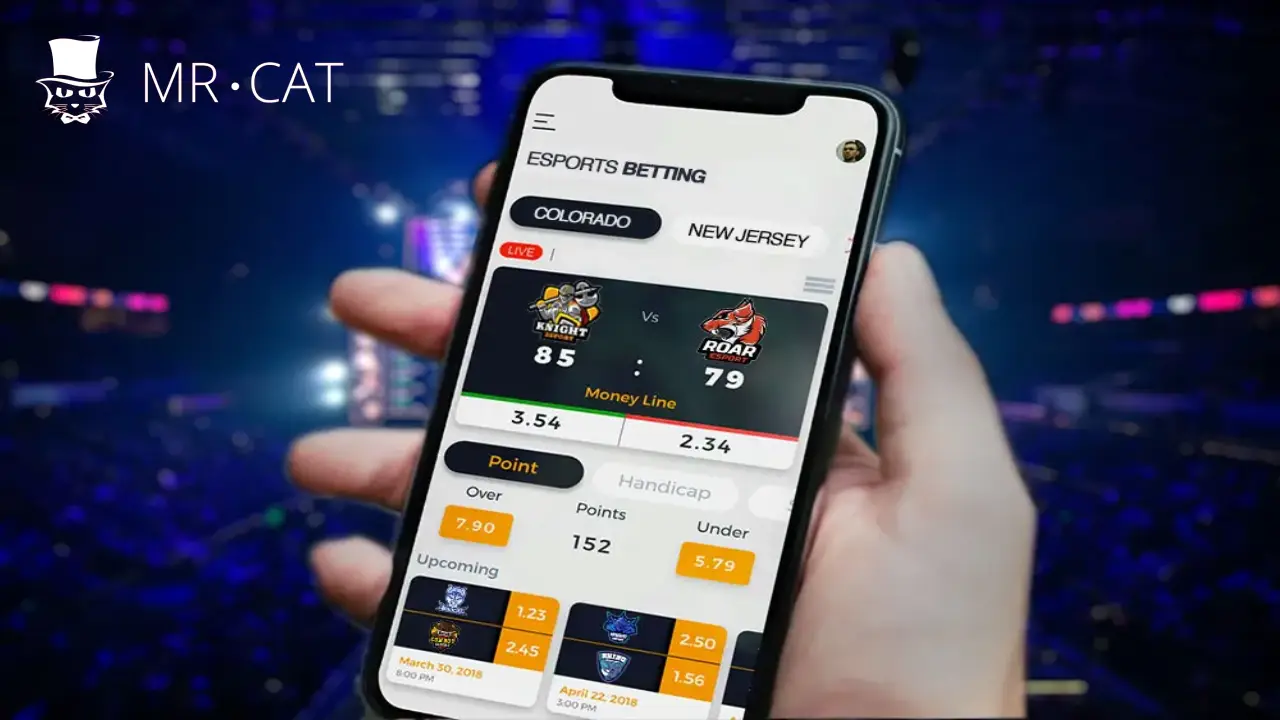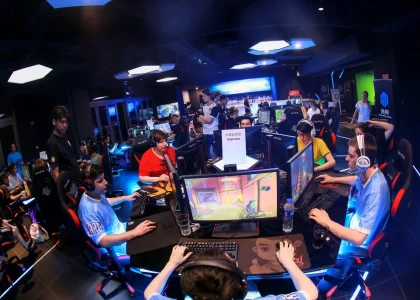In-Play Betting, also known as live betting, is an exciting and dynamic way to wager on League of Legends (LoL) matches as they unfold in real-time. Unlike traditional pre-match bets, where you predict outcomes before the game starts, in-play betting allows you to place bets on various events and outcomes while the game is actively in progress. This form of betting offers a unique opportunity for bettors to leverage evolving game conditions, team performances, and strategic shifts to make informed decisions.
In-play betting has grown in popularity due to the fast-paced, unpredictable nature of esports, particularly in games like League of Legends where momentum can shift rapidly based on key in-game events such as first blood, dragon control, or Baron Nashor fights. Understanding the intricacies of live betting in League of Legends can give bettors a significant edge, allowing them to capitalize on real-time opportunities as the action unfolds.
How In-Play Betting Works in League of Legends
In-play betting provides a variety of betting markets that become available as the match progresses. These markets can range from simple wagers, like which team will secure the next objective, to more complex bets, like which team will win after falling behind early in the game. Odds for these markets fluctuate constantly, reflecting the live dynamics of the game. For instance, if a team secures early objectives and builds a gold lead, their odds to win will improve, while the odds for their opponents will lengthen.
Bettors can monitor these shifting odds and make decisions based on the changing circumstances of the match. For example, if a team with strong scaling champions falls behind in the early game, in-play betting allows you to place a wager on their late-game comeback when their odds are more favorable.
Key Factors to Consider in In-Play Betting
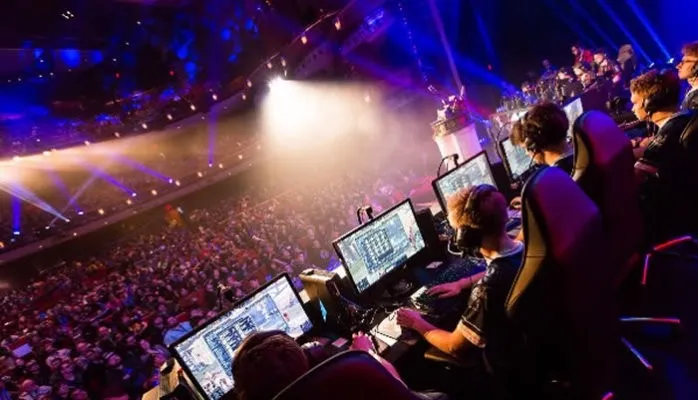
To succeed in in-play betting for League of Legends, it’s crucial to stay aware of several important factors that can drastically affect the flow of the game. Understanding these elements allows you to make more accurate predictions during live matches.
1. Draft Phase and Champion Selection
- Impact on Early vs. Late Game: Before the match even begins, the draft phase provides valuable insights into how the game might play out. Teams may draft compositions built for early-game dominance, focusing on aggressive champions that excel in skirmishes and early objectives. Alternatively, a team may draft scaling champions, designed to be stronger in the late game. Recognizing the type of compositions each team has drafted will help inform your in-play bets, especially if a team with a late-game composition falls behind early but is poised for a comeback.
- Counter Picks and Flexibility: Champion matchups can significantly influence the flow of the game. For example, if one team picks a champion that counters their opponent’s strategy, they might gain an early lead, which could prompt a favorable in-play bet on that team to win certain objectives or snowball the game.
2. Early-Game Momentum
- First Blood and Early Objectives: In League of Legends, securing first blood, first tower, or early-game objectives such as dragons or Rift Herald can give a team an early advantage. However, early-game leads do not always guarantee a win. Experienced teams may give up these objectives in favor of focusing on late-game scaling. Watching how a team responds to early-game pressure can offer valuable information on how the rest of the match will unfold. For example, if a team falls behind early but retains strong control over key areas of the map, they may be a good candidate for a comeback, especially if their composition is designed for late-game strength.
- Early Gold Lead: If a team builds a significant gold lead early in the game, it typically increases their odds of winning. However, it’s essential to assess how the leading team uses that advantage. Teams that consistently apply pressure and make strategic decisions based on their gold lead are more likely to convert their advantage into a victory. If a team squanders their gold lead by making mistakes or overextending, this could create a prime opportunity for in-play bets favoring their opponents.
3. Mid-Game Objectives and Control
- Map Control: The mid-game in League of Legends often revolves around map control and vision dominance, particularly around neutral objectives like dragons and Baron Nashor. Teams that control key areas of the map are more likely to secure objectives, making them stronger candidates for in-play bets on specific outcomes, such as securing the next dragon or Baron Nashor.
- Teamfights and Skirmishes: As the game progresses, teamfights and skirmishes become pivotal moments that can shift the game’s momentum. Watching how teams engage in these fights and how they execute their strategies can provide significant insights. For example, a team that wins a decisive teamfight may secure a Baron or Elder Dragon, drastically increasing their chances of winning the game. In-play bets placed right after such crucial fights can yield high returns if timed well.
4. Late-Game Scaling and Win Conditions
- Scaling Champions and Late-Game Strength: Some champions and team compositions become much stronger as the game progresses. Recognizing when a team’s scaling composition is coming online can give you a betting edge. Even if a team is behind in the early game, if they have powerful late-game champions like Kassadin, Kayle, or Jinx, they may still have a strong chance to turn the game around.
- Pressure and Mental Fortitude: In longer, high-stakes matches (such as in best-of-five series or elimination games), teams’ mental fortitude becomes a crucial factor. Teams with strong mental resilience are more likely to bounce back from early-game deficits, making them good candidates for in-play comeback bets. Conversely, teams that crumble under pressure may falter even after securing an early lead.
5. Real-Time Odds Fluctuations
- Odds Movements: In-play betting odds change dynamically based on the flow of the game. As events like tower destruction, kills, or objectives occur, the odds adjust in real time. Savvy bettors can take advantage of these odds fluctuations by betting at opportune moments. For example, if a team secures a critical objective like Baron Nashor but is still behind in gold, their odds may not fully reflect the strength of the temporary buff they’ve gained. Betting on such teams after they secure Baron can often lead to favorable returns.
6. Psychological and Momentum Shifts
- Comeback Potential: In League of Legends, momentum swings can happen rapidly. A team that is far behind can make a single decisive play—such as winning a teamfight or securing a Baron—that flips the game in their favor. Understanding a team’s comeback potential and tracking their mental resilience is critical for in-play betting. For instance, a team with a history of staging comebacks is worth betting on even when the odds are stacked against them mid-game.
- Tilt Factor: On the flip side, some teams can enter a state of “tilt” after suffering a string of unfortunate events or poor decisions. If a team is consistently losing fights or making questionable plays, it might be a signal to place in-play bets against them, as their performance could continue to decline.
Common In-Play Betting Markets in League of Legends
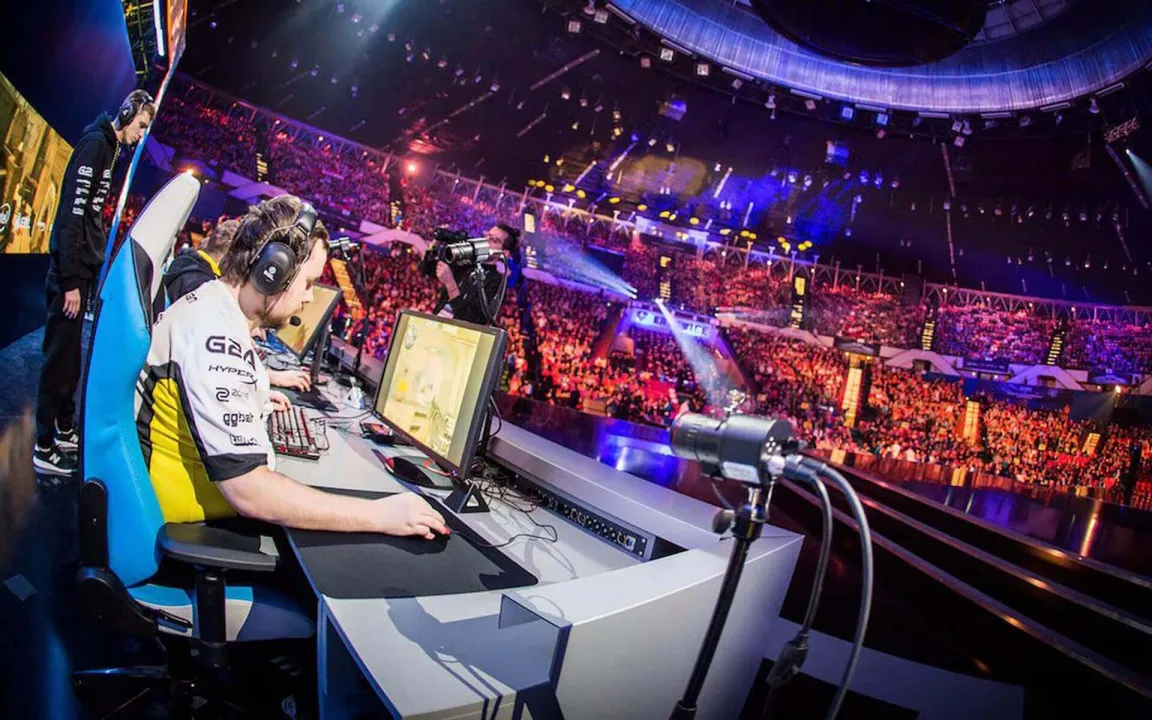
In-play betting opens up a wide variety of markets to explore, many of which are unavailable in traditional pre-match bets. Here are some of the most common live betting options you’ll encounter in League of Legends:
1. Next Tower to Fall
- This market allows you to bet on which team will destroy the next tower. Teams that have map control and a strong siege composition are more likely to take towers quickly. Watching how teams set up vision and rotate around the map can give you clues about which team will take the next tower.
2. Next Dragon or Baron
- Bettors can wager on which team will secure the next dragon or Baron Nashor. Pay attention to vision control, team positioning, and which team has the stronger objective-taking composition. A team with champions like Jhin, Elise, or Karthus, for example, may have stronger control over neutral objectives due to their range or burst damage.
3. First Inhibitor
- The first inhibitor bet focuses on which team will break the opposing team’s base and take down their inhibitor first. Teams that have strong map control and wave clear abilities are more likely to siege and take down inhibitors early.
4. Team to Score the Next Kill
- Bettors can wager on which team will secure the next kill. This market is particularly volatile and can change rapidly, but watching how teams set up for engagements, who has summoner spells available, and which champions are spiking in power at the moment can provide valuable insights.
5. Game Winner
- In-play betting allows you to bet on the game winner at any point during the match. Odds for this market will fluctuate significantly based on in-game events like teamfights, objectives, and map control. Teams that secure critical objectives like Baron or Elder Dragon often become favored, but unexpected comebacks remain possible.
Strategies for In-Play Betting Success
To maximize your chances of success with in-play betting, it’s important to approach it with a clear strategy and an understanding of the game’s ebb and flow.
1. Stay Updated with Game Knowledge
- League of Legends is a constantly evolving game, with regular patches and balance changes that affect champions, items, and the meta. Staying up to date with these changes will help you make more informed bets. Understanding which champions are currently strong in the meta and how different team compositions work will give you an edge in making live bets.
2. Watch for Overreactions to Early Game
- Many bettors overreact to early-game leads, assuming that a team with a few kills or an early tower lead is guaranteed to win. However, League of Legends is a game of strategy and timing, where late-game scaling and team coordination often trump early advantages. Avoid placing hasty bets based solely on early-game momentum and instead look for opportunities to bet on teams with stronger late-game potential.
3. Leverage Your Knowledge of Player Tendencies
- Every team and player has their own tendencies and playstyle. Some teams are known for playing aggressively and snowballing early, while others prefer slower, methodical approaches that rely on scaling. Recognizing these tendencies will help you anticipate how games will unfold and when to place your bets.
4. Use Live Streams to Your Advantage
- Watching live streams of the match is critical for in-play betting success. Being able to see real-time gameplay, team movements, and critical fights gives you valuable context that odds alone can’t provide. Watching the game unfold helps you make more accurate predictions and seize betting opportunities as they arise.
Conclusion
In-play betting in League of Legends offers a thrilling, real-time betting experience that allows you to react to the game as it happens. With its dynamic nature and fluctuating odds, this betting style rewards those who can quickly assess in-game events, team momentum, and individual player performance. By staying attuned to key factors like draft phase, early-game skirmishes, and late-game scaling, you can capitalize on live betting opportunities that might not have been apparent before the match started.
Ultimately, successful in-play betting in League of Legends requires both a deep understanding of the game and the ability to make quick, informed decisions. The fast pace of live betting offers high-risk, high-reward opportunities, but with the right strategies and insights, you can leverage these bets to your advantage.


